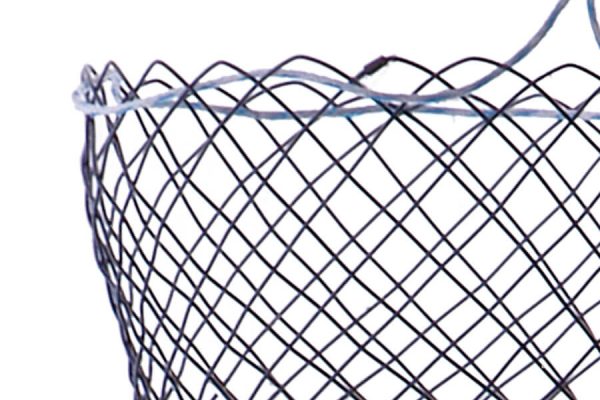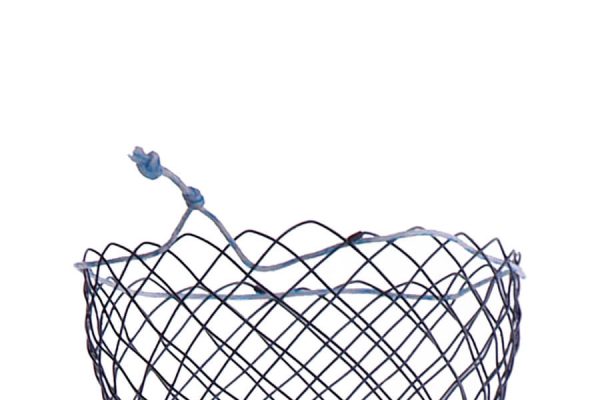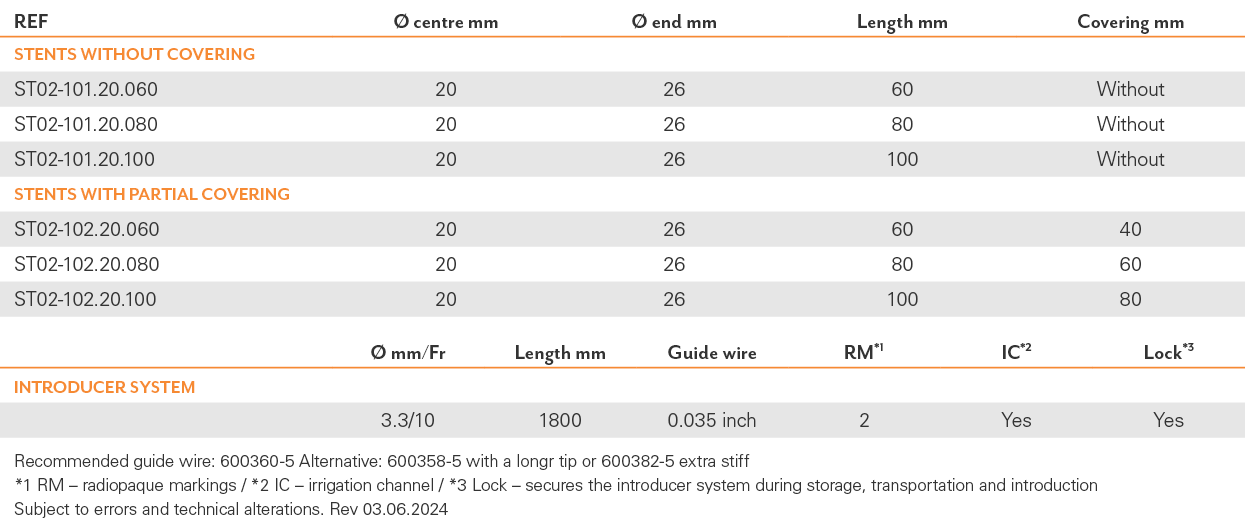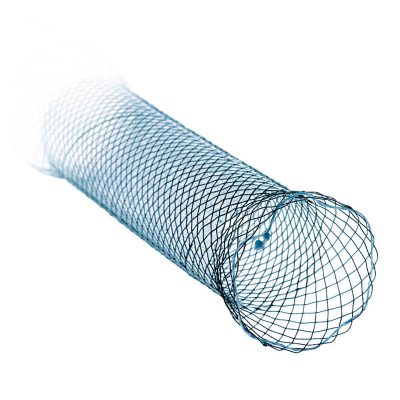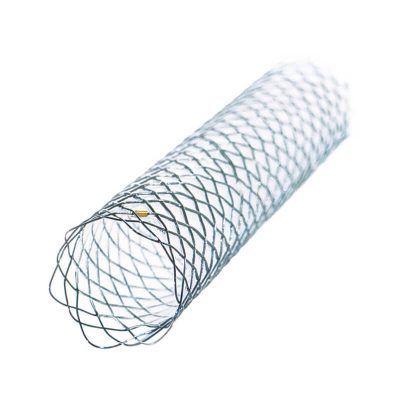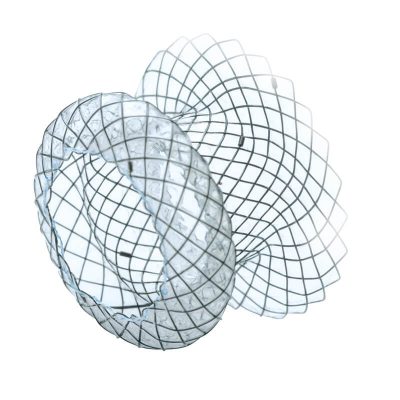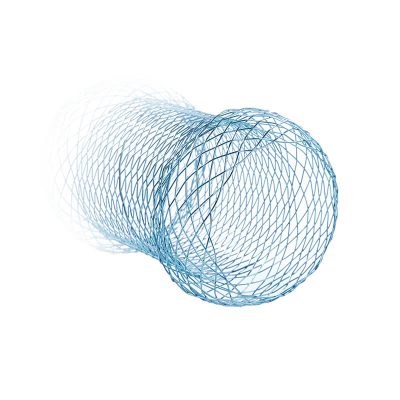The self-expanding Nitinol stents are used to bypass stenoses in the duodenum. Their spherical ends adapt perfectly to the anatomy of the duodenum, thereby guaranteeing maximum positional stability. Stents with and without covering are available depending on the indication. The duodenual stent is preloaded on a TTS introducer (through-the-scope) as standard. Insertion is therefore carried out through the working channel of the endoscope and release of the stent is observed endoscopically. X-ray markings on the introducer and on the stent itself ensure optimum radiological visualisation.
DUODENUM STENTS
HIGH LEVEL OF POSITIONAL STABILITY VIA ANATOMICAL DESIGN
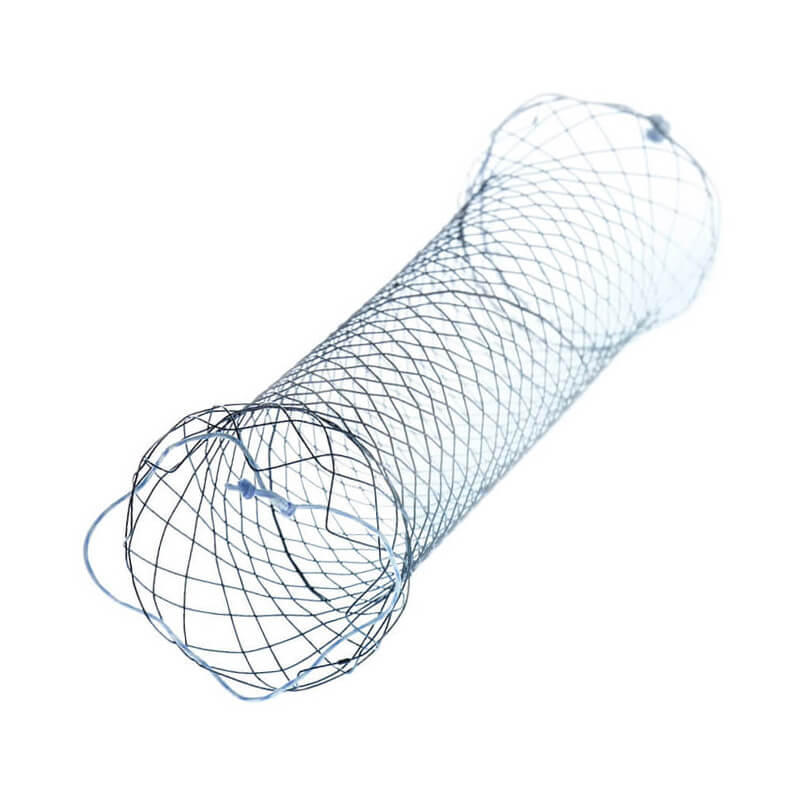
SPECIFIC CHARACTERISTICS
- Spherical ends
- Self-expanding
- Nitinol mesh with atraumatic ends
- Release under endoscopic observation
- High degree of positional stability
- Resistant and elastic covering
- High radiopacity
- Extraction threads for removal and repositioning
- Guide wire-compatible up to 0.035 inches
SUCCESSFUL IN PRACTICAL USE
The X-ray images show the release process under radiological monitoring. The good radiopacity plus additional X-ray markings on the stent assist orientation and facilitate the release of the duodenal stent. The endoscopic position control clarifies the stent’s optimum expansion.
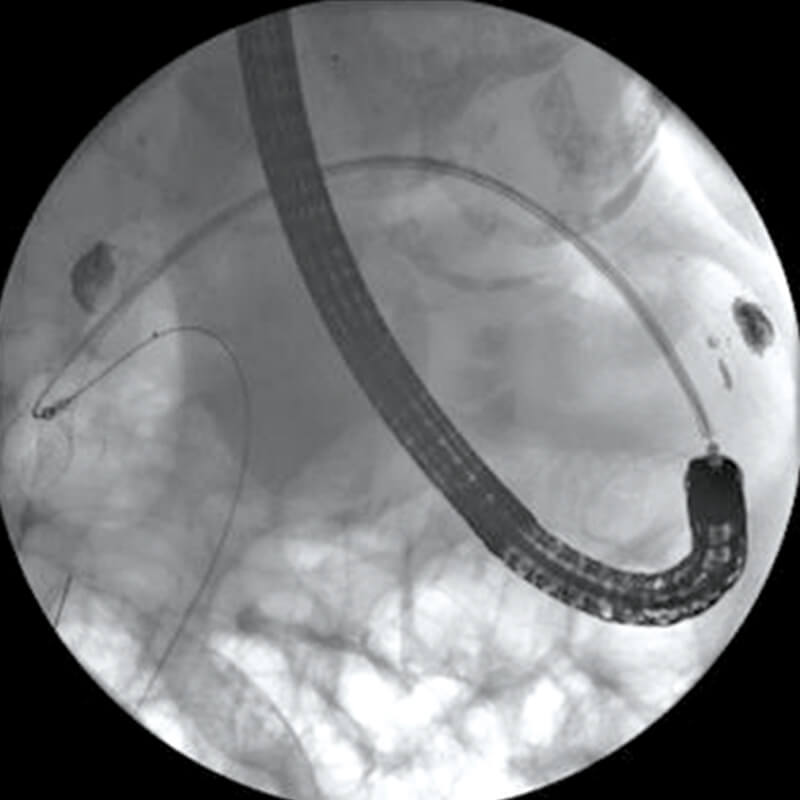
Stent during release
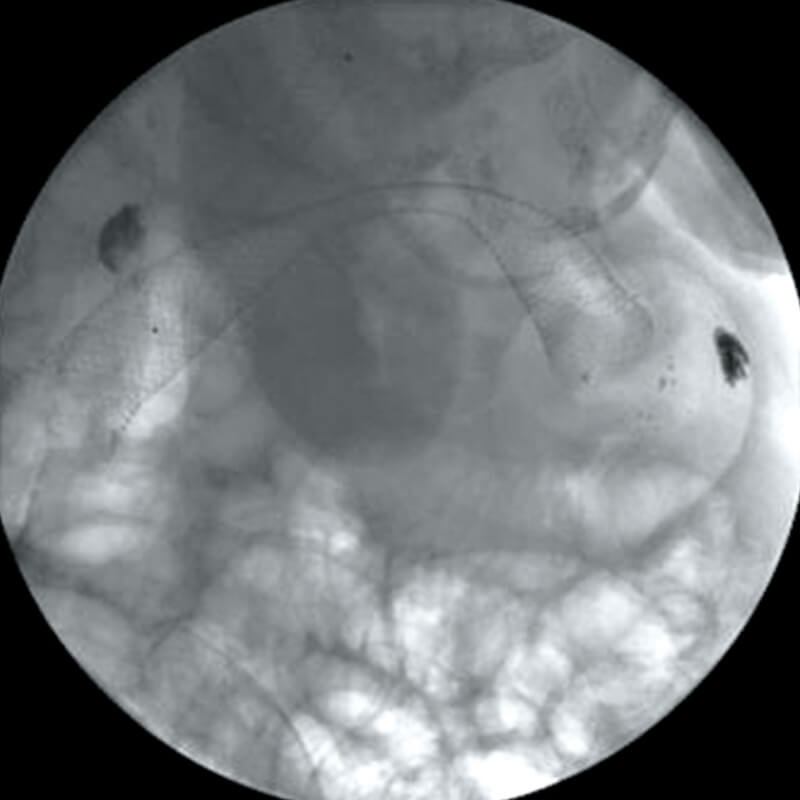
Deployed stent
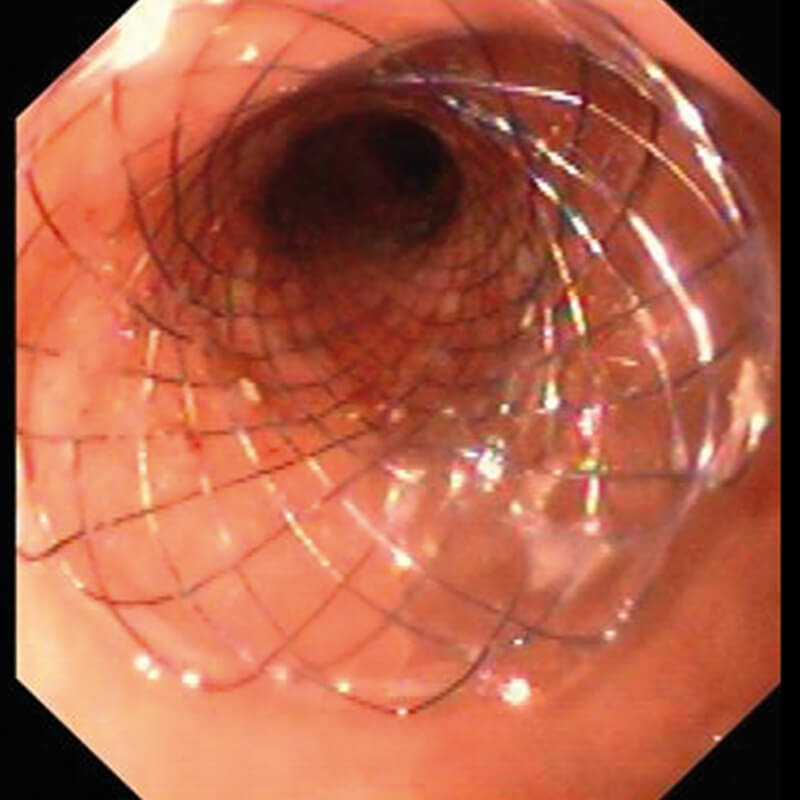
View deployed stent
ALWAYS THE APPROPRIATE SOLUTION
With a diameter of 20 mm and different lengths of 60. 80. 100 or 120 mm, the range of duodenual stents always provides the right size for your patient.


